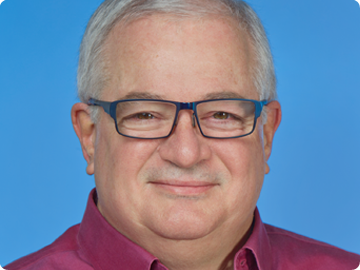Graphical Programming Allows Small Staff to Design Big Machine
August 18, 2015

To watch it operate, you’d never guess that FireFly Equipment’s ProSlab 155, a 18,000-lb automated sod harvesting machine, was designed without the help of software engineers.
When the 29-foot-long mobile monster rolls across a turf farm, it lifts sod from the ground, cuts it into manageable pieces, carries it up a conveyor, and stacks it on pallets — all without human intervention. It operates its five servo-driven axes and 40 hydraulic valves on the basis of commands from an embedded computer executing complicated software routines — none which were written by experienced programmers.
”We’re mechanical engineers, not degreed software people,” Steven Aposhian, chief technology officer and president of FireFly, told Design News at the recent NIWeek 2015 conference organized by National Instruments. “Yet we were able to build a complex, highly automated product, from concept to finished design, in under a year.”
Indeed, FireFly’s harvester is a complex product — and a remarkable engineering achievement, as well. But what’s not readily visible to observers is that this massive machine isn’t a product of a big corporate conglomerate or even a medium-sized engineering office. It’s the brainchild of a staff of six, including four mechanical engineers, who did the design, programming, and electrical build themselves. The bare-bones approach not only enabled the fledgling company to save much-needed money, it got the product out the door faster.
MORE FROM DESIGN NEWS: FPGAs Cut Subaru’s Test Times
”We’re a startup — a small company,” noted Eric Aston, principal mechanical engineer for FireFly. “We knew we had to get our second machine to market or we’d be out of business.”
The company’s small staff accomplished that by employing National Instruments' (NI) LabVIEW graphical programming language, which is specifically targeted at “domain experts” — i.e., people who know their application, but aren’t trained as software experts. Aposhian, a one-time NI employee, understood LabVIEW from prior experience and took it upon himself to assemble the code that controls the machine. The resulting software serves as the glue that enables the machine to acquire data from 150 sensors and then actuate brushless DC servo motors that stack and cut, while hydraulic systems do the lifting and propulsion.
”I came from a company that employed half a dozen embedded engineers and half a dozen circuit designers,” Aston said. “But we couldn’t do that here. We didn’t have the money or the time to hire electrical engineers and software engineers.”

At last week’s developer conference, NI engineers said that FireFly is the exact kind of company that NI targets with its LabVIEW programming language. LabVIEW, which enables developers to create software by connecting graphical function blocks, was launched by National Instruments in 1986 partially as a means of simplifying programming. It’s notable for having enabled thousands of scientists and engineers to create their own software programs.
”Companies like (FireFly) are the domain experts of the mechanical world,” NI co-founder Jeff Kodosky told Design News. “They don’t want to become electrical engineers or programmers. They just want to add intelligence to their products.” Kodosky added that he has seen hundreds of “domain experts” succeed in this way, including a San Francisco physician who used the graphical language to acquire data for a medical school study.
To some extent ProSlab 155, has already begun changing its industry. Up to now, a large percentage of turf harvesting has been done by hand-stacking, the company said. The few machines available for automated sod harvesting have been unpopular, in part because they haven’t been good at performing multiple parallel operations. In contrast, ProSlab 155 has been more successful, reportedly because LabVIEW and the machine’s CompactRIO embedded computer are well-suited to parallelism.
FireFly claims its new smart machine harvests 20 percent faster and uses 50% less diesel fuel than competing systems. In its first year of production, the machine has also outsold its two main competitors combined.
Equally important, the company hopes its technology will help turf farms move beyond the traditional approach of hand-harvesting. “This is faster and simpler,” Aposhian said. "It’s climate-controlled. The operator just sits inside and monitors it.”

We’re heading to Philly! Design & Manufacturing Philadelphia will take place Oct. 7-8. Get up close with the latest design and manufacturing technologies, meet qualified suppliers for your applications, and expand your network. Learn from experts at educational conferences and specialty events. Register today and join us at Philadelphia’s premier industry showcase!
Senior technical editor Chuck Murray has been writing about technology for 31 years. He joined Design News in 1987, and has covered electronics, automation, fluid power, and autos.
About the Author(s)
You May Also Like



